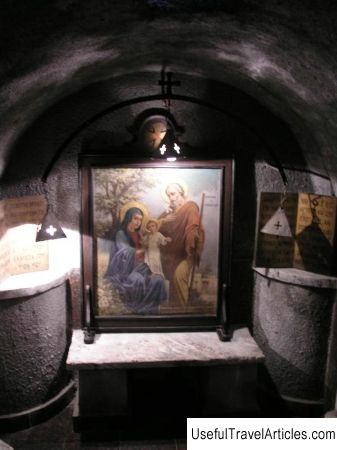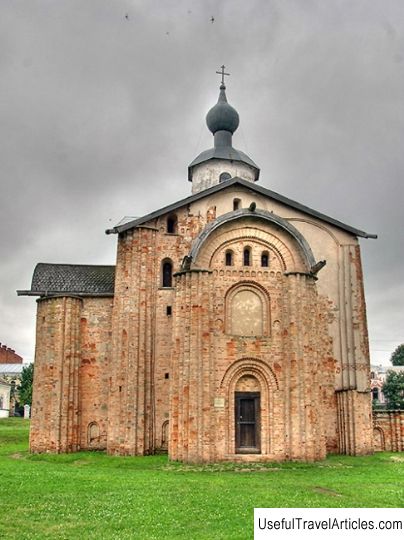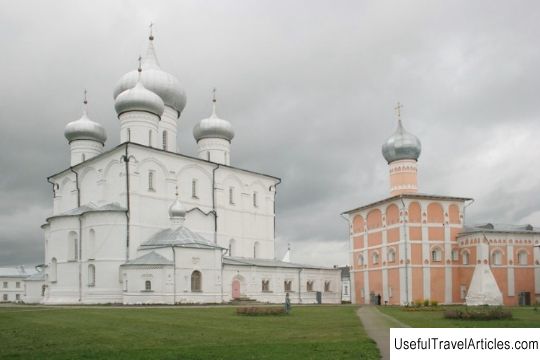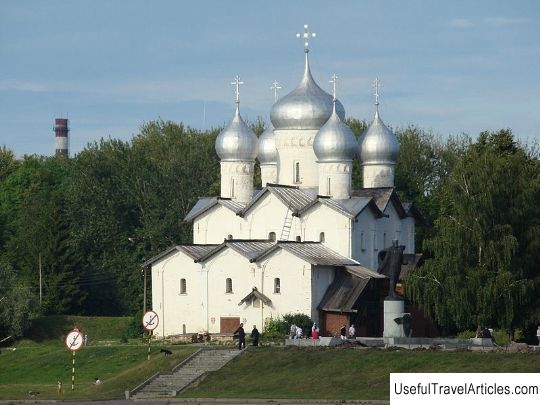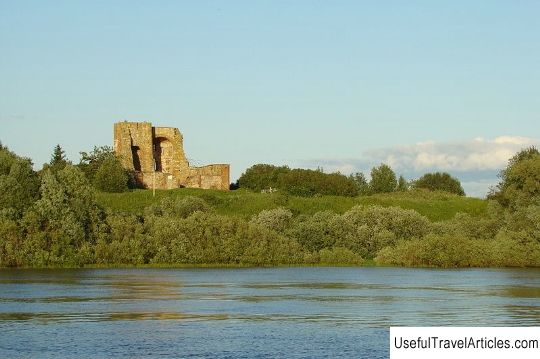Church of the Savior on Nereditsa description and photos - Russia - North-West: Veliky Novgorod
Rating: 8,6/10 (2439 votes) 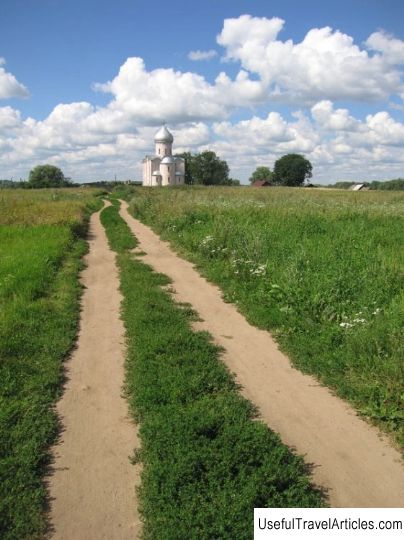
Church of the Savior on Nereditsa description and photo - Russia - Northwest: Veliky Novgorod. Detailed information about the attraction. Description, photos and a map showing the nearest significant objects. Photo and descriptionAbove a high hill among flooded meadows you can see the massive and well-known Church of the Savior on Nereditsa - the Church of the Transfiguration of the Lord, located 1.5 km from the city of Novgorod on the right bank of the former Maly Volkhovets river bed and not far from Rurikov Gorodishche. The church was built in the summer of 1198 by the Grand Duke Yaroslav Vladimirovich. The Church of the Savior is one of the last stone buildings of the Novgorod princes. And although the dimensions of the church are not so great, it is perceived as a monumental and imposing structure. Initially, a staircase tower adjoined the church, which led directly to the mountains, but soon it was gone. In 1199 the temple was painted, after which several centuries of obscurity followed. Later, in the second half of the 19th century, lovers of antiquity and historians drew attention to Nereditsa. The church gained the greatest fame at the beginning of the 20th century. At that time, it became clear for sure that the frescoes of the Savior on Nereditsa are an amazing phenomenon, which in terms of safety, integrity and artistic significance go far beyond the borders of Russian art and have truly global significance. The most precious monument of Novgorodian monumental painting of the 12th century is Nereditsa's frescoes, which represent an intact and absolutely complete cycle. An in-depth study of frescoes began in the 1910s. During 1903-1904, the first restoration of the temple was carried out under the guidance of the famous architect P.P. Pokryshkin. It took only 40 years to sketch and study the frescoes of Nereditsa. In 1941, the famous monument of world importance was lost. The Church of the Savior on Nereditsa was on the front line, which led to its falling under the fire of enemy artillery; the temple fell into ruins. The upper parts of the walls, the dome and the vaults collapsed. The building was not even half survived, and only insignificant fragments remained from the frescoes. The largest medieval ensemble was the Paintings of the Savior Nereditsa, which were brutally destroyed by the Nazi troops, which became an irreplaceable loss for the entire Russian culture. It was in this ensemble that all the characteristic features of Novgorod painting were so clearly expressed. The frescoes of Nereditsa amazed with their amazing preservation, as well as completeness in the choice of subjects, introducing the viewer to the incredible system of medieval painting. The Church of Nereditsa is somewhat similar to the Church of the Intercession on the Nerl, after all, not only the Vladimir temple, but also Nereditsa are located outside the city limits and are inextricably linked with the landscape around it. The Church of the Savior in appearance is not much different from the modest merchant, boyar and street Novgorod buildings of the late 12th century. It is a small one-domed cube-type temple made of limestone, which is a local building material. The slab has an amazing feature - this stone cannot be perfectly processed, because its surfaces will always be rough and uneven, which creates the appearance of clay. The interior of the temple is immersed in twilight and seems especially compressed due to the massiveness of the walls and the weight of the pillars. The surviving fragments of unique frescoes can be seen on the western and southern walls, as well as in the central apse of the temple. The imagery of the frescoes of the temple of Nereditsa is similar to the architecture of the building itself, which expresses all spiritual power combined with power. The masters who painted the temple were Novgorodians, although they were related to different art schools. The first master painted in the Byzantine archaic manner, and two other masters belonged to the Novgorod school, which taught drawing in a bright graphic manner, although one of the artists clearly painted more primitive than the other. Today, the frescoes of the Church of the Savior on Nereditsa can be view only in special albums that were created by researchers of the first half of the 20th century. The album contains copied frescoes, which will help to preserve in memory the great Russian heritage of the greatest masters of the Middle Ages. People keep visiting the famous temple on the ancient walls of which you can see the remaining immortal frescoes.      We also recommend reading Church of Gerasim Boldinsky description and photo - Russia - Baltics: Kaliningrad Topic: Church of the Savior on Nereditsa description and photos - Russia - North-West: Veliky Novgorod. |
